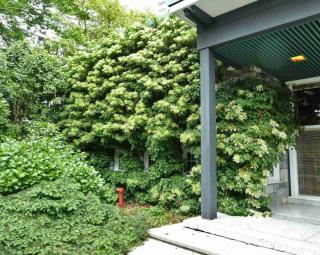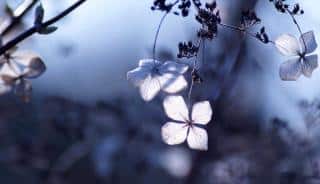

Climbing hydrangea is a beautiful plant that blooms in the summer.
Climbing hydrangea facts
Name – Hydrangea petiolaris
Synonym – Hydrangea anomala subsp. petiolaris
Family – Hydrangeaceae
Type – climbing vine
Height – 25 to 40 feet (8 to 12 meters)
Exposure – shade or part sun
Soil – ordinary
Foliage – deciduous
Flowering – June to September
Caring for climbing hydrangea is easy and they will quickly join other flowers in decorating your garden boxes, walls, gazebos and other lattices along your terrace and garden.

If you wish to plant in spring or summer, provide for regular watering at the beginning.

Since it even blooms in the shade, it will do great to add color to a shaded courtyard.

If ever it grows too wild and large, you can cut it back to a single, main stem to reduce its size. Indeed, it tends to build upon its woody growth to extend its reach as much as it can.
Do this “heavy maintenance” pruning about once every 3-4 years in fall, after the blooming is over.


A beautiful climbing vine, this climbing hydrangea will produce magnificent little flowers grouped in umbels 8 to 10 inches (20 to 25 cm) across.

This hydrangea is both very appealing visually and easy to care for, and is an ideal choice for any walls that facing north.
Read also:
To support the growth of the plant, give it organic fertilizer from the start, in the form of time-release granules.